Cock-a-Doodle-Do's and Don'ts: Identifying a Rooster
Expert guidance on distinguishing hens from roosters. From vent and wing sexing to debunking myths about crowing and spurs, this blog emphasizes the reliability of feather development.
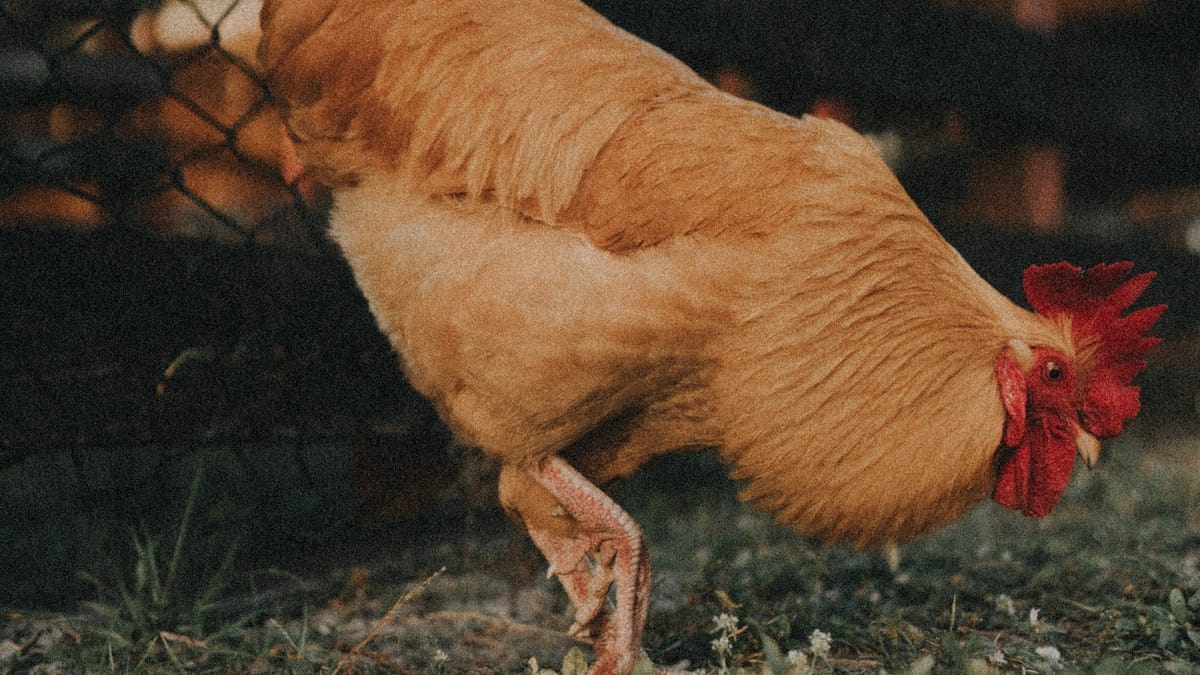
New and experienced chicken owners alike have all seen a chicken that made us do a double take: hen or rooster? Unfortunately, it is not always so cut and dry, but we are going to show you all the best (and worst) indicators and debunk some old wives' tales.
Sexing of day-old chicks
First, you will have to know how we sex our chicks here at Mt. Healthy.
We vent sex, which involves exposing and examining their vent to see the presence of male genitalia or lack thereof. This is the most accurate form of sexing that applies to all types of poultry. It's a highly specialized skill, so please do not try it at home! You could injure or potentially kill a baby chicken if performed incorrectly.
An alternative but popular form of sexing is wing sexing. However, we do not breed for wing sexing, therefore our chickens cannot be wing sexed. If correctly bred for, feather sexing can be very accurate. If the chick in question can be feather sexed, you determine sex by the layout of the primary feathers or the feathers at the wingtips. Females will have two visible rows of feather shafts of alternating lengths, versus males who will only have a single, same-length row of feather shafts. In some cases, it is very evident who is who.
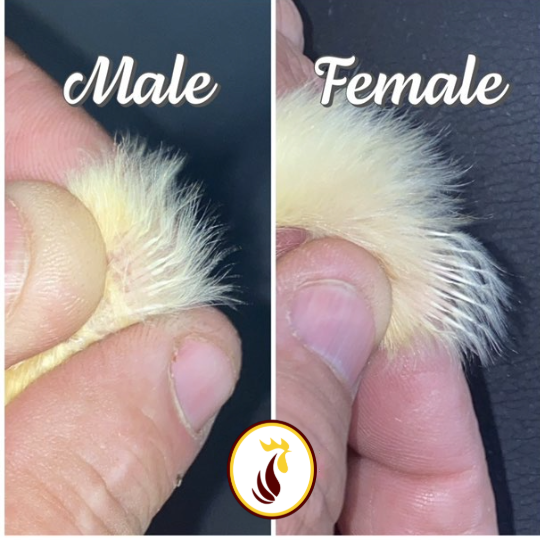
Other times are not so obvious. This is where human error becomes a factor.
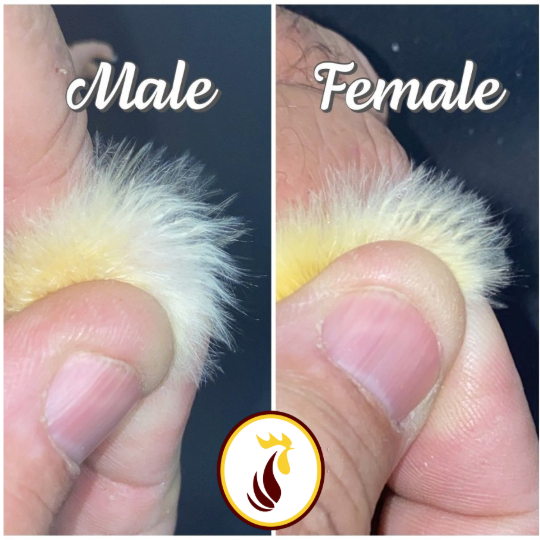
Regardless of how clear wing sexing looks, this will only be true if the chick is specifically bred to be wing sexed. Again, we choose to vent sex so our birds are not able to be wing sexed accurately.
Combs and Wattles
The most common and the most mistaken way is judging absolutely based on comb and wattles. It is expected that if it has a larger comb, it is a male. While true, this can be exceptionally misleading - especially in a flock of mixed breeds. Different breeds inherently have different comb sizes.
While it is true that roosters typically have larger combs and wattles than their hen counterpart - if you are comparing between different breeds it becomes much more unclear. Roosters generally develop their combs and wattles sooner than hens BUT AGAIN this is only a decent (at best) reference if we're looking at the same breed and age.
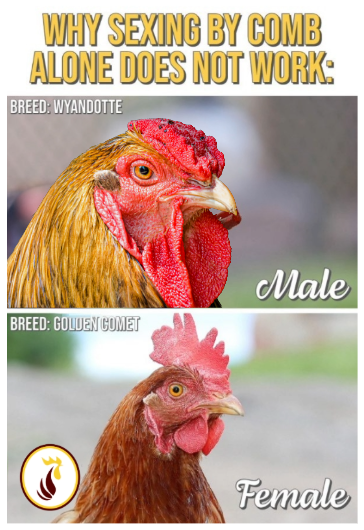
Feathers - Hackle, Saddle, and Sickle
The most accurate and clear way to visibly sex a young or juvenile chicken is through the feathers. Males will develop saddle feathers around 8-12 weeks old, while hackle and sickle feathers do not make an appearance until 16-24 weeks. Saddle feathers are a clearer difference and develop earlier, so this is the preferred indicator.
Saddle feathers are feathers that develop towards the base of the abdomen/beginning of the tail. On roosters, they are long, draping feathers with pointed tips. On hens, they are much shorter, wider, and more of an oval shape. Hackle feathers are the feathers that surround the neck. Again, on roosters, they will be longer, narrower, and pointed, while on hens, they are wide and oval-shaped. Sickle Feathers are the classic long, dramatic, arced feathers that stick out from the tail. While the presence of sickle feathers would make it very obvious that it is a male, they often aren't present for other reasons. Sickles are some of the last adult feathers to develop, and they are commonly preened off or damaged; often you already know the bird to be male before the sickles really start to show up.
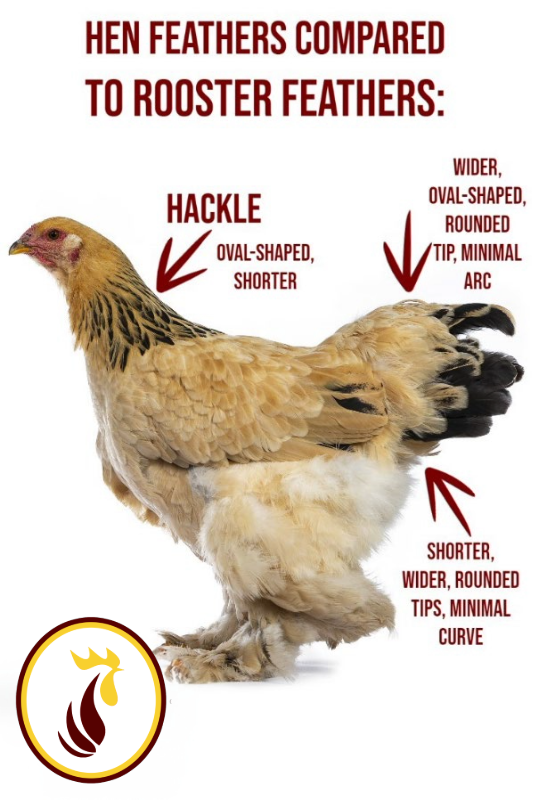
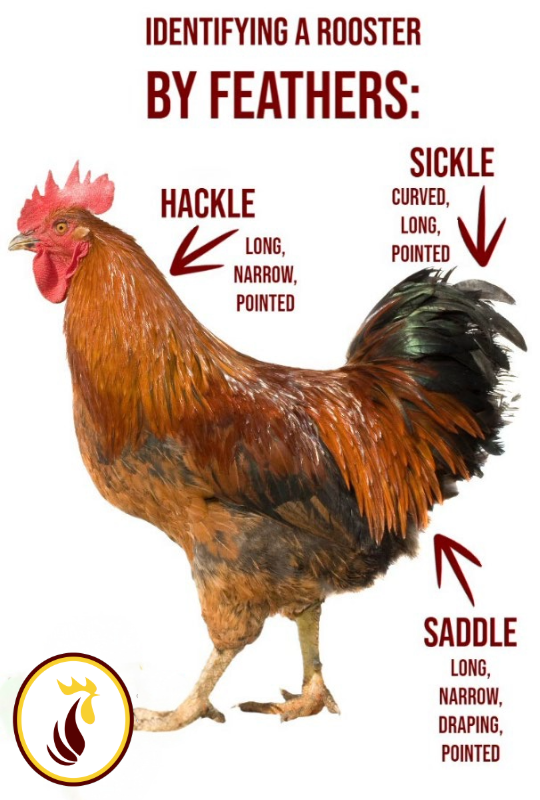
A comparison of feather shape, size and orientation on roosters and hens
There are a few exceptions to this rule, one of which is called hen-feathered. This is where these differences between sexes are minimal to none. Some hen-feathered breeds are Sebrights, Campines, and Silkies. Additionally, any rumpless breeds (pure Ameraucanas, some Easter Eggers, etc.) cannot use tail feathers as an indicator.
Crowing and Spurs
Crowing and spurs are lumped together because they are similar, as they are associated with roosters. However, they are not exclusive to, nor do they apply to every rooster.
Spurs are sharp protrusions from the back of a chicken's leg above where it conjoins with the foot. Hens having spurs is very abnormal but definitely not impossible. All chickens will have a bump called a 'spur bud' in the same place, some more pronounced than others. Hens are capable of emitting a crowing-like sound. When this happens, it is typically the most dominant hen in a same-sex flock. Again, not likely, but absolutely possible
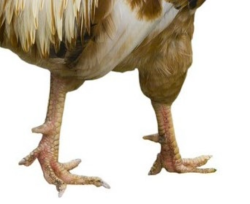
Personality
Personality is not a clear example of sex. Behavior is influenced by breed, sex, environment, and care. For a relatable comparison, think of dog breeds. Certain breeds have reputations of being friendly or aggressive, active or lazy, but ultimately, they are a product of their environment. As with all animals, there are always a few deviations from the expectation.
That being said, roosters are commonly territorial, assertive, and dominant in comparison to hens. But, do not assume if you have a domineering or 'bully' chicken that it is always male. With proper care, you can absolutely have a gentle rooster. Adversely, with improper care, you can make the meanest chicken out of the friendliest hen.
Physical Size
Size or weight is a valid indicator only if we are looking at a flock of the same breed, sex, age, and origin. When looking at the same breed, males will become visually larger than females upon sexual maturity. The age of sexual maturity will vary however, it is generally in the range of 16 to 24 weeks. Any notable disparities in the size of a single breed flock before sexual maturity is likely a genetic or environmental factor. An example of this would be a smaller chick being at the bottom of the pecking order and having limited access to food.
In a mixed breed flock, you must account for each breed's projected size. For example, hybrids such as Golden Comets, are a fast-growing, but small breed. They are often larger than other chicks as 'teenagers' but will be significantly smaller than most breeds upon sexual maturity - regardless of sex.
Totally ineffective ways to sex a chicken
Manipulating incubation to hatch a higher ratio of females
There is no way to alter the sex of an embryo by incubation technique. No ifs ands or buts.
Oblong and narrow-shaped eggs hatch male chicks, round eggs hatch females.
Wrong, there is no correlation.
Tie a gold ring over the chick, if it swings in a line it is a male, if it swings circularly it is a female.
Just no.
Throw a hat in the brooder, hens will scatter, and roosters will go after the hat.
I see where you are coming from with this but no. Again, reference 'personality'.
In Conclusion
Have faith in the feathers! If you have a mystery chicken that has you questioning, give it time. Wait for those saddle feathers to come in (or not come in) and if you find you have more males than our 10% sexing margin, call us, and we will make it right! Please wait until they are at least 10 weeks old before you're sure she is a he, and please, please, PLEASE do not only look at the combs! A little patience and knowledge can go a long way.
If you enjoy this content, and you'd like to see more of it, please subscribe!
